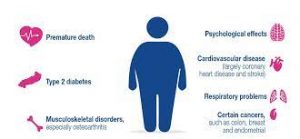Diabetes Cure On The Horizon
Diabetes Cure on the Horizon?
Diabetes is one of the most significant health issues in the United States today, affecting millions of Americans. Diabetes is the seventh most common cause of death in America, so it is a vast area in American medical research.
 What if it were possible to cure Diabetes? Imagine how many lives would be saved and how much longer people would live. New research shows that there may be hope for Diabetes sufferers, and one day shortly, they may be able to overcome the disease entirely, at least in patients with Type-1 Diabetes.
What if it were possible to cure Diabetes? Imagine how many lives would be saved and how much longer people would live. New research shows that there may be hope for Diabetes sufferers, and one day shortly, they may be able to overcome the disease entirely, at least in patients with Type-1 Diabetes.
What is the Difference between Type-1 and Type-2 Diabetes?
Type-1 Diabetes is a form of diabetes that occurs in childhood. It is the least common of the two forms of Diabetes, affecting only five to ten percent of diabetes sufferers. Type-1 Diabetes is an autoimmune disorder in which the patient's immune system directly attacks the pancreatic islet cells that produce insulin.
Over the course of years, the ability to produce insulin is entirely depleted in the patient, and they need to take insulin to survive. Insulin is the hormone that facilitates the transfer of energy from glucose to the cells.
Type-2 Diabetes, on the other hand, is far more common and generally becomes an issue in adulthood. It is primarily a lifestyle disease in which the patient develops what is known as insulin resistance, where their body loses the ability to transport glucose effectively.
Historically, Type-2 Diabetes has been rare in adolescent patients, but the number of patients with this condition is rising. Type-2 Diabetes is caused primarily by a diet high in sugar and processed carbohydrates, which causes sugar levels and insulin levels to spike unnaturally.
Over time, the body often loses its ability to effectively produce insulin due to this condition, necessitating medical treatment.
UAB Diabetes Study
In a groundbreaking study by the University of Alabama Birmingham, scientists have discovered that a medication currently available on the market can counteract Diabetes in animal subjects.
Mammals, at least, for the most part, all use insulin the same way, so what works in mammals should also work in humans. The results of this study were so promising that they led directly to a donation of over two million dollars by the Juvenile Diabetes Research Foundation to attempt to replicate the results in a human clinical study.
This research study is titled The Repurposing of Verapamil as a Beta Cell Survival Therapy in Type 1 Diabetes. The study is projected to start in the winter of 2015. It is ultimately the result of a decade-plus of combined research led by the University of Alabama Birmingham Comprehensive Diabetes Center.
How Does Verapamil Cure Diabetes?
This study is promoting a revolutionary new form of diabetes treatment. Scientists and medical professionals have long known that the pancreas' beta cells are responsible for insulin production.
Still, no medical approaches have been designed to promote the regeneration of these vitally essential cells. When glucose enters the bloodstream, the Beta Cells produce insulin to transport glucose to the cells.
Researchers at UAB have discovered that elevated blood sugar leads directly to the excess production of a particular protein known as TXNIP. Beta cells produce TXNIP, and patients with Diabetes produce way too much of it. Before UAB discovered their function and processes, no one knew what  these proteins did.
these proteins did.
Unfortunately, when the Beta Cells have elevated levels of TXNIP for too long, this is toxic and contributes to the death of the cells. This is why Type-2 Diabetes gets worse over time.
Using this knowledge, UAB Researchers tested the effectiveness of various existing drugs on the TXNIP concentrations within Beta Cells. They discovered that one particular medication, Verapamil, could significantly suppress TXNIP levels in rodent models.
Rodents with blood sugar levels higher than 300 mg/dl and clear diabetes were given Verapamil treatment. The medication was so effective that the rodents essentially no longer suffered from Diabetes.
What Is Verapamil Used For?
Verapamil is a type of medication which is known as a Calcium Channel Blocker. The medication is designed to alleviate symptoms such as chest pain and high blood pressure by encouraging vasodilation of the blood vessels and the heart. Medical treatment is also sometimes used for conditions in which the heart beats irregularly.
This is not the first time a medication designed to facilitate vasodilation has shown potential outside its established or hypothesized use. Viagra is an effective erectile dysfunction medication that was first synthesized to treat similar conditions but was found to be more effective as an erectile aid.
Information Regarding Verapamil Diabetes Trial
Now that they have established the effectiveness of Verapamil in animal subjects, it's time to test the effectiveness and safety of the treatment on human patients. In this study, 52 participants will be selected for the study. Selected patients will range in age between 19 and 45. This study is looking to select participants who have just been diagnosed with Type-1 Diabetes three months before recruitment.
These patients will be divided into a control and experimental group. Half of the patients will be given a placebo, whereas the other half will receive Verapamil. All patients will continue using Insulin Treatments for the duration of the study.
Throughout the study, the patients will also carry a device designed to constantly monitor their blood sugar levels for the entire year, providing researchers with vital information concerning their health.
Patients experiencing unexplained weight loss, fatigue, excessive urination, or significant thirst are encouraged to visit their doctor to see if they suffer from Diabetes and could potentially benefit from this study.
Research Indicates that Verapamil May Be a Highly Effective Diabetes Treatment
The lead researcher in charge of this trial is Dr. Anath Shalev, the head of the University of Alabama Birmingham Comprehensive Diabetes Center. He explains that it is clear from the Center's research that Verapamil has the capability to both stop diabetes before it starts and cures those that currently suffer from Diabetes, at least in rodent subjects.
By suppressing TXNIP in Beta Cells, it appears possible to protect and preserve Insulin production fully.
Verapamil appears to be effective, or at least highly beneficial, for practically all patients suffering from Diabetes, even those that are suffering from severe Diabetes. The primary cause of Type-1 Diabetes is the death of Beta Cells, and if it is possible to prevent these cells from dying or create an atmosphere in which they can regenerate, this would be huge. As of today, there are no treatments of this kind that are available to patients.
The secondary head of this Diabetes Cure Study is Fernando Ovalle. He also played a significant role in creating this study and will be responsible for ensuring everything goes to plan with the execution of the human trial. He will be responsible for collecting data, testing, treatment, and recruitment of participants.
How Is Diabetes Treated Today?
Today, the symptoms of Diabetes are treated rather than the root cause. To promote and preserve the patient's health as effectively as possible, doctors prescribe drugs to reduce blood sugar and insulin to facilitate the effective transport of glucose to cells throughout the body. When blood sugar levels are too high, it essentially becomes toxic and damages the circulatory system.
If it is possible to treat Diabetes with Verapamil, this will change the way Diabetes is treated worldwide and could even eliminate the need for Insulin and other drugs in the long term. As people grow older and more susceptible to Diabetes, a treatment like this could save many lives and billions of dollars each year.
Diabetes is an American Epidemic
Diabetes is one of the most dangerous and widespread diseases in the United States today. In fact, it is currently the 7th most common mortality risk among Americans. The devastating effects of Diabetes are widespread circulatory issues associated with diabetes and lead to various health issues, including amputation, kidney disease, blindness, hypertension, and heart attack.
Diabetes is a prevalent condition, and the American government estimates that more than 12% of men and women over the age of 20 suffer from  diabetes, whether they realize it or not. Beyond that 12%, it is believed that 37% of patients are pre-diabetic, meaning their blood sugar levels are elevated.
diabetes, whether they realize it or not. Beyond that 12%, it is believed that 37% of patients are pre-diabetic, meaning their blood sugar levels are elevated.
This means that, shortly, it is nearly undeniable that the number of people with Diabetes will continue to grow. Only ten years ago, 27% of Americans over 20 were considered pre-diabetic.
New cases of Diabetes continue to increase in the United States but are finally starting to slow down. Over 8% of adults were discovered to have Diabetes in the year 2012. Specific populations are more susceptible to Diabetes at this time than others. Hispanics and blacks, for example, are still experiencing Diabetes at an increasing pace, as well as men and women that never graduated or only graduated high school.
It is imperative to find new and more effective treatments for Diabetes not only for the social cost but also for the financial cost of the condition. The American Diabetes Association estimates that Diabetes cost the United States almost $250 billion dollars last year.
Changes in Beta Cell Function Play a Role in both Type-1 and Type-2 Diabetes
It has been clear for many years that Type-1 and Type-2 Diabetes are primarily the results of diminishing Beta Cell Function. It's also been clear that both forms of Diabetes lead to the death of Beta Cells. It is only recently, and due to the diligent efforts of UAB researchers, that we have come closer to recognizing the root cause of the condition.
Interestingly, even adult patients with Type-1 Diabetes diagnosed in their youth still have some level of Beta Cell activity despite their autoimmune issues. Unfortunately, there are not enough Beta Cells to promote healthy blood sugar.
Previously, it was hypothesized that it would be possible to implant Beta Cells to facilitate healthier blood sugar. Still, in practice, this form of treatment is incredibly costly and of limited effectiveness. As a result, increased research is being put into creating a way to create an atmosphere in the pancreas and the Beta Cells where the body could regenerate its own tissues and restore its ability to produce insulin.
It appears that Verapamil may be able to do just that, suppressing the negative influence of TXNIP and allowing the Beta Cells to propagate and repopulate the Pancreatic Islets. The Juvenile Diabetes Research Foundation is the biggest charity in the world that promotes research to help patients with Type-1 Diabetes.
The JDRF has several goals concerning the research that they choose to fund. In particular, this study was chosen because the charity places a particular emphasis on research that is designed to allow patients to restore proper pancreatic function potentially.
Any study which may potentially cure Type-1 Diabetes is near the top of their list for grants, and Verapamil may lead Diabetes to know longer be a chronic condition but an actual, reversible disease. The specific name of the JDRF initiative is the Beta Cell Restoration Research Program.
One way to cure Diabetes would be to catch the condition relatively early and provide aggressive treatment designed to amplify the function and survival of the Beta Cells which produce Insulin.
Dr. Andrew Rakeman, a director at the JDRF, explains that this Verapamil study is the end result of years and decades of Diabetes basic research promoted by the charity. Before new, practicable research can be conducted, the scientific foundation must be laid for those new treatments.
As a result of all of this basic research, it is now possible for scientists to use that science to create treatments that can benefit patients and save lives. This treatment may benefit patients with both Type-1 and Type-2 Diabetes. Dr. Rakeman is excited about this study because it can absolutely change the way that Diabetes is treated and may even cure the condition, at least in some facet.
The patients will see their established Clinical endocrinologists and Research Practitioners in this study. The goal of the University of Alabama Birmingham researchers will be to assess the ability of the patient to make their own insulin and measure how well the patient is controlling blood sugar  based on the readings on their glucose sensor.
based on the readings on their glucose sensor.
The researchers will also use a modern and advanced test called C-Peptide Response to assess how well the patient can produce his or her own insulin and how many functional beta cells they actually have over the course of the study.
Verapamil Has Big Advantages for Patients over Other Clinical Diabetes Trials
Because of the way that Verapamil works, it is much safer for the patient than other forms of experimental treatment being studied. Most other experimental studies use medications that modulate or suppress the immune system to slow down or prevent the immune system from attacking the Beta Cells.
Unfortunately, drugs like these can have significant side effects, which can be very hard on the patient.
Verapamil has long been used by patients suffering from high blood pressure and other related conditions. In fact, it has been used effectively for over thirty years with no significant side effects.
As a result, the researchers are highly confident that the medication will not lead to any severe side effects, even if the treatment is, in the end, of limited effectiveness.
A lot of scientific data derived from animal research and in vitro human tissue studies shows how Verapamil works and how it can effectively treat diabetes. If this treatment is effective, it will be the only Diabetes treatment available that actually promotes the natural proliferation of natural Insulin and the natural enhancement and proliferation of Beta Cells.
How Did Researchers Discover that Verapamil Could Be Effective for Diabetes Patients?
It took more than ten years for the original hypothesis regarding Diabetes Research to turn into actionable results. It began with a simple brainstorming question and has developed into a totally new mechanism for Diabetes treatment.
Dr. Shalev feels strongly that this Verapamil Treatment will change the way that we treat Diabetes throughout the world. At this point, it is unclear exactly how effective the Verapamil treatment will be.
It's very much possible that this research will eventually lead patients to invigorate their Beta Cell concentrations so significantly that they can overcome the need for Insulin treatments. It's very possible that this treatment could totally cure Diabetes. Dr. Shalev is quick to point out that, although this research points to that potential conclusion, a single year of treatment duration in this particular study will likely not lead to total independence from Insulin.
However, this does not mean that Verapamil will not be highly beneficial to patients. Even if Verapamil cannot totally reinvigorate Insulin Production, increased natural Insulin Production will benefit the patient significantly even if they still need to take Insulin.
This is because natural Insulin production of any kind allows the body to tweak Insulin levels to meet the needs of the body. One of the issues with Insulin Injections alone is that they can't adapt to particular circumstances and meet the ideal needs of the body accurately, which increases the risk of complications. Increased natural Insulin Production reduces the risk of these complications.
Even the concept of Verapamil will totally change how we think about Diabetes. This represents an entirely new area of Diabetes Study, one that the University of Alabama Birmingham is at the forefront of, along with the Southern Research Institute.
The two institutions have combined forces to form the Alabama Drug Discovery Institute. In addition to the current study featuring Verapamil, they are also looking into other potential treatments that can modulate TXNIP levels to effectively treat diabetes by preserving and proliferating the Beta Cells of the Pancreatic Islets.
Dr. Shalev explains that none of the current treatments available provide ultimately effective treatment for Diabetes, which is why mortality rates associated with the disease are so significant.
This research is the first time where there truly is hope to reverse the global Diabetes epidemic. The doctor also explains that it is due to the vigorous efforts of the University of Alabama Birmingham Comprehensive Diabetes Center and the forward-thinking of the administration and the friends of the school that created an atmosphere where these advances are possible.



- 0001 What Is Adrenal Fatigue [Last Updated On: May 20th, 2025] [Originally Added On: October 23rd, 2020]
- 0002 Understanding Thyroid Function And Diagnosing Thyroid Issues [Last Updated On: May 21st, 2025] [Originally Added On: October 24th, 2020]
- 0003 Twelve Steps To Enhance And Preserve Your Memory [Last Updated On: January 28th, 2025] [Originally Added On: October 25th, 2020]
- 0004 The Psychological And Physiological Effects Of Serotonin [Last Updated On: January 28th, 2025] [Originally Added On: October 26th, 2020]
- 0005 The Facts About Psoriasis: Symptoms And Causes [Last Updated On: January 27th, 2025] [Originally Added On: October 27th, 2020]
- 0006 The Facts About Acromegaly [Last Updated On: May 24th, 2025] [Originally Added On: October 28th, 2020]
- 0007 The Effects Of Hgh Deficiency Upon One Of A Pair Of Twins [Last Updated On: January 27th, 2025] [Originally Added On: October 29th, 2020]
- 0008 Resveratrol Anti-aging Supplementation For Longevity [Last Updated On: May 19th, 2025] [Originally Added On: October 30th, 2020]
- 0009 Sermorelin Acetate Injections With Ghrp-6 [Last Updated On: February 18th, 2025] [Originally Added On: October 31st, 2020]
- 0010 Melatonin The Sleep Hormone How It Impacts Your Health [Last Updated On: May 26th, 2025] [Originally Added On: November 1st, 2020]
- 0011 Mark Cuban To Fund Study On Healing Power Of Hgh [Last Updated On: May 27th, 2025] [Originally Added On: November 2nd, 2020]
- 0012 Mark Cuban Advocates For Hgh As A Rehab And Recovery Tool [Last Updated On: January 26th, 2025] [Originally Added On: November 3rd, 2020]
- 0013 Leptin Hormone Guide: The Effects Of The Satiety Hormone [Last Updated On: January 26th, 2025] [Originally Added On: November 4th, 2020]
- 0014 Human Growth Hormone Deficiency Impact On Sleeping Habits [Last Updated On: January 25th, 2025] [Originally Added On: November 5th, 2020]
- 0015 Human Growth Hormone And Liver Regeneration [Last Updated On: January 25th, 2025] [Originally Added On: November 6th, 2020]
- 0016 Hgh Treatment For Fatty Liver Disease On The Horizon [Last Updated On: February 17th, 2025] [Originally Added On: November 7th, 2020]
- 0017 Your Current HGH Level [Last Updated On: March 28th, 2025] [Originally Added On: November 8th, 2020]
- 0018 Ghrelin The Hunger Hormone [Last Updated On: January 24th, 2025] [Originally Added On: November 9th, 2020]
- 0019 Enclomiphene Citrate Andropause Treatment Up For Fda Approval [Last Updated On: January 24th, 2025] [Originally Added On: November 10th, 2020]
- 0020 Dopamine Pleasure Hormone And So Much More [Last Updated On: April 26th, 2025] [Originally Added On: November 11th, 2020]
- 0021 Boost Metabolism To Lose Weight And Maintain Weight Loss [Last Updated On: January 23rd, 2025] [Originally Added On: November 13th, 2020]
- 0022 Andropause A Mid-life Hormone Crisis [Last Updated On: February 18th, 2025] [Originally Added On: November 14th, 2020]
- 0023 SOGROYA INJECTIONS FOR HUMAN GROWTH HORMONE DEFICIENCY [Last Updated On: February 19th, 2025] [Originally Added On: March 24th, 2021]
- 0024 How Do High and Low Estrogen Impact Male Health and Wellness? [Last Updated On: February 9th, 2025] [Originally Added On: April 2nd, 2021]
- 0025 The Effects Of Hormone Imbalance On Belly Fat [Last Updated On: February 18th, 2025] [Originally Added On: May 8th, 2021]
- 0026 Could Sunlight Help Remove Rogue Hormones from the Water Supply? [Last Updated On: February 20th, 2025] [Originally Added On: May 29th, 2021]
- 0027 Weekly HGH Therapy Just as Effective as Daily Injections [Last Updated On: April 4th, 2025] [Originally Added On: June 18th, 2021]
- 0028 DHEA and Testosterone: A winning team! [Last Updated On: February 14th, 2025] [Originally Added On: January 19th, 2022]
- 0029 Animal Research Discovers Link Between Exercise, HGH, and Cognitive Ability [Last Updated On: February 14th, 2025] [Originally Added On: May 20th, 2022]
- 0030 Weekly Hormone Treatments for Adult HGH Deficiency with Sogroya [Last Updated On: February 18th, 2025] [Originally Added On: June 14th, 2022]
- 0031 Ancient Critters Made Human Hormone System What It Is Today [Last Updated On: March 13th, 2025] [Originally Added On: June 26th, 2022]
- 0032 How Substance Abuse Can Affect Your Hormone Levels [Last Updated On: March 16th, 2025] [Originally Added On: August 4th, 2022]
- 0033 A Holistic Approach to Health and Water Safety [Last Updated On: February 7th, 2025] [Originally Added On: February 7th, 2025]
- 0034 Understanding the Role of Sogroya in Adult Human Growth Hormone (HGH) Deficiency Treatment [Last Updated On: February 12th, 2025] [Originally Added On: February 11th, 2025]
- 0035 Andropause: An Examination of Mid-life Hormonal Shifts in Males [Last Updated On: February 16th, 2025] [Originally Added On: February 13th, 2025]
- 0036 Sermorelin Acetate Therapy: A Comprehensive Insight into its Benefits with GHRP-6 [Last Updated On: February 17th, 2025] [Originally Added On: February 14th, 2025]
- 0037 The Dynamic Duo of Male Vitality: Testosterone and DHEA [Last Updated On: February 14th, 2025] [Originally Added On: February 14th, 2025]
Word Count: 2704






